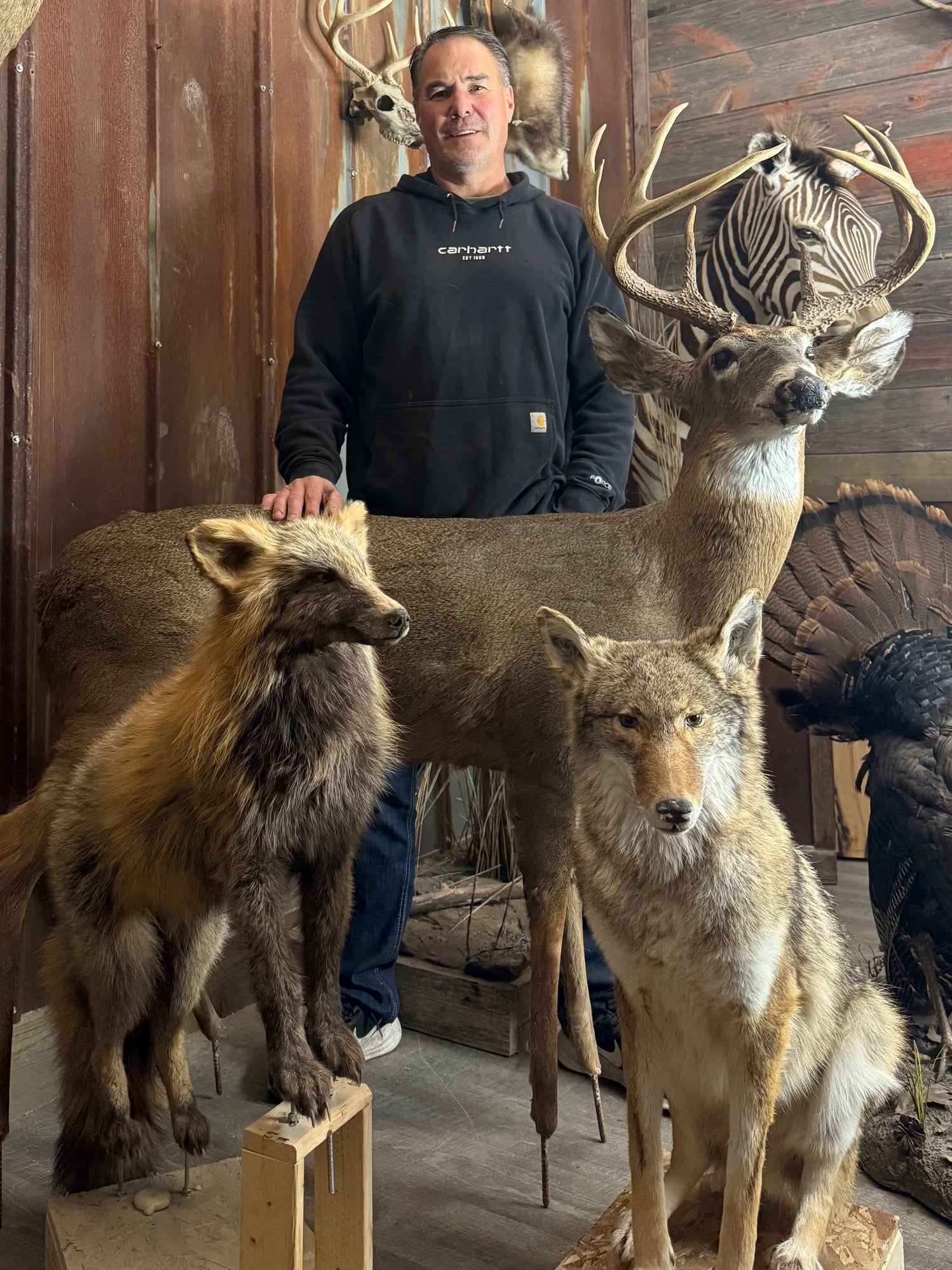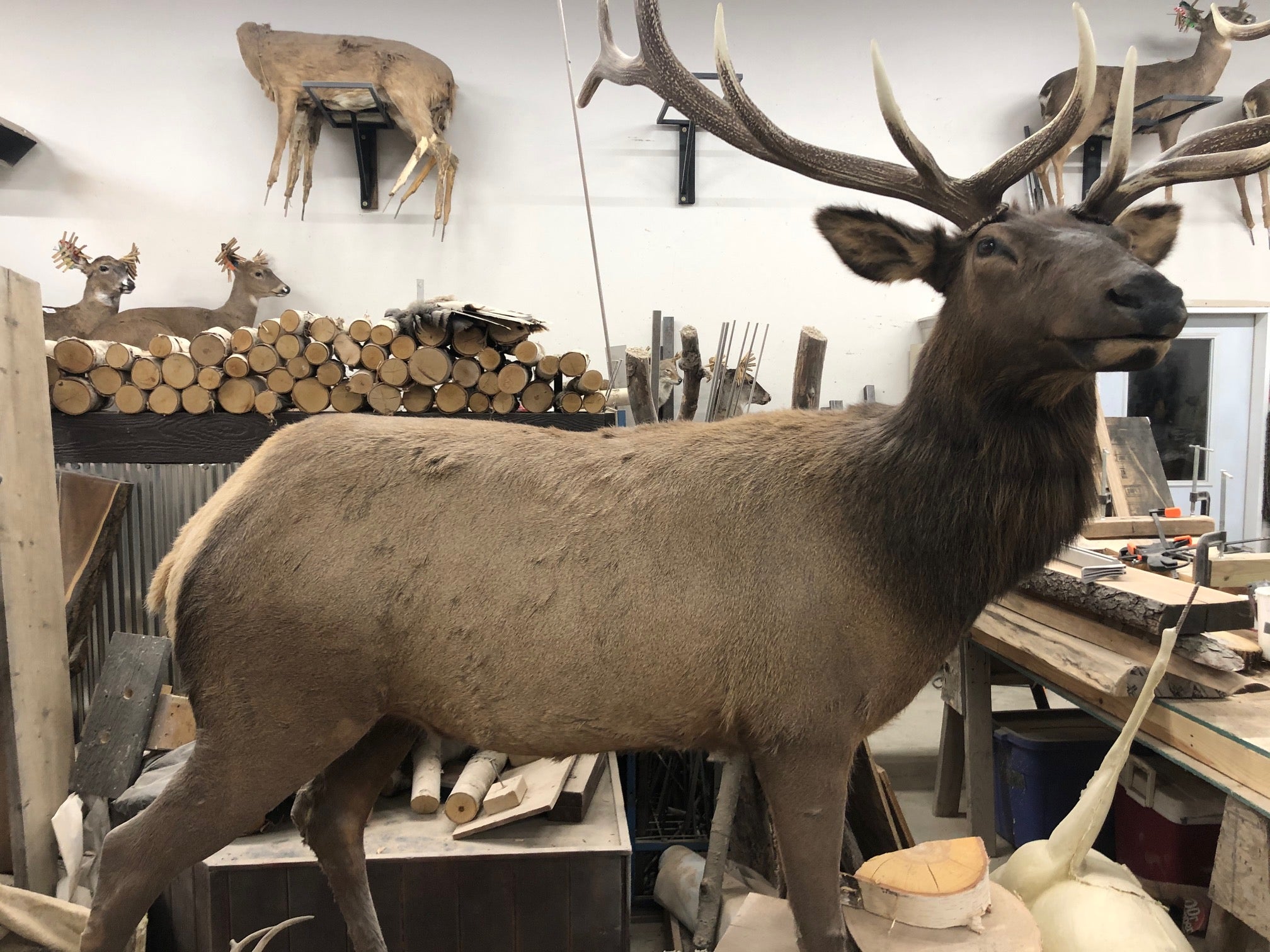Wisconsin hunters have a longtime tradition of turning their prey into lifelike keepsakes that are mounted on walls or sit on the floor. But a Mosinee taxidermist is using his craft to protect wild animals from poachers.
Brian Wolslegel of Custom Robotic Wildlife, Inc., creates deer, elk, moose and more that can move, give off heat and even poop. He animates his models with remote-control car parts in an effort to help game wardens around the country draw out and nab poachers.
His services are in demand around the country. But as poachers start to catch on, Wolslegel is forced to up his game.
Stay connected to Wisconsin news — your way
Get trustworthy reporting and unique local stories from WPR delivered directly to your inbox.
“(It’s) a back-and-forth, cat-and-mouse game,” Wolslegel said.
Wolslegel joined WPR’s “Wisconsin Today” to talk about how he brings his decoys to life and how he stays ahead in the wildlife enforcement arms race.
This interview has been edited for length and clarity.

Rob Ferrett: What are wildlife officers doing with these decoys?
Brian Wolslegel: They’re putting them out on the sides of the road, mostly during hunting season, trying to catch people shooting off the road or shooting at night. A lot of times, people will spotlight and then shoot the deer, because the deer don’t move.
A lot of people think that these officers are just throwing these out there on the side of the road and hoping that some person drives down the road and shoots at it. And that’s not the case at all. … They already know who they’re after. They know the truck. They know who it is. They’re working a targeted operation to find the person and catch them in the act.
That’s where the decoy comes in. Getting a law enforcement officer, the poacher and a wild animal to walk down the street at the same point, at the same time, is nearly impossible. Using the decoy eliminates a lot of that. They just have to wait for the guy to come down the road and they have the other two elements in place.
RF: What technology are you using to animate these decoys?
BW: A lot of it is (remote-control) car parts, but we create a lot of our own parts. We have a milling machine and a lathe, and we make a lot of what we need. But it’s based on the technology of cars with a remote control so these officers can sit a distance away and observe the poacher coming down the road and still move the deer.
When we first started, some of them didn’t move at all. Others, we would put a moving ear on it and tie fishing line to its tail, so when its ear would twitch, its tail would move. But as time goes on, everybody catches on to things. So we started advancing as well, making the heads and legs move.
Some of them have swivel bases so they actually turn. We used to do a track system, (but) we don’t do as many anymore. It just was tough for the officers to set up a track system. I can make it work on my cement floor, but putting a track system out in the wild is a little different because of the ground and the twigs and uneven land.
RF: So they’ve got some movement. And I understand, at least in some cases, they can have droppings.
BW: Yeah, we messed around with one that had a little auger system that lifted its tail up like it was dropping some brown M&M’s. So that worked for a little bit.
RF: How do the decoys hold up to being shot?
BW: Some of them shoot 10 or 12 times at the decoy. … You’d think that people would catch on after a couple shots.
Over the years, it’s amazing, we don’t replace as many as you’d think we would. They last quite a long time. (One) officer in Oregon did a study, and over a 10-year period he averaged about $30,000 in (fine) revenue off of one $2,000 decoy.
RF: Are your decoys used in other contexts?
BW: We do a lot of mounts for TV commercials and movies. There’s a couple of different companies that I work with right now and they call me anytime the producers are looking for some type of animal. We recently did a black wolf for a scene that was being filmed in downtown Chicago. Obviously they can’t release a wolf down there to film, so they used ours … They (look) real. You can’t really tell the difference.
RF: What are you designing next?
BW: Lately, we’ve been working on one we call “The Heat.” It’s a thermal deer, so it has heating pads in it. A lot of poachers are using thermal scopes. They drive down the road, and if it doesn’t put out a heat signature, obviously they don’t shoot it. So now this one will actually heat up and put out a signature, so it looks like a real deer out there.
It’s been a long time coming, and it’s been little over a year of development and trying to get it to where we want it, where we’re comfortable selling it to the officers so that they can use it effectively.
We’re (also) working on one that has a CO2 cartridge in its nose. So on a cold day, it would actually poof out some steam, which would be kind of cool.

Source link
